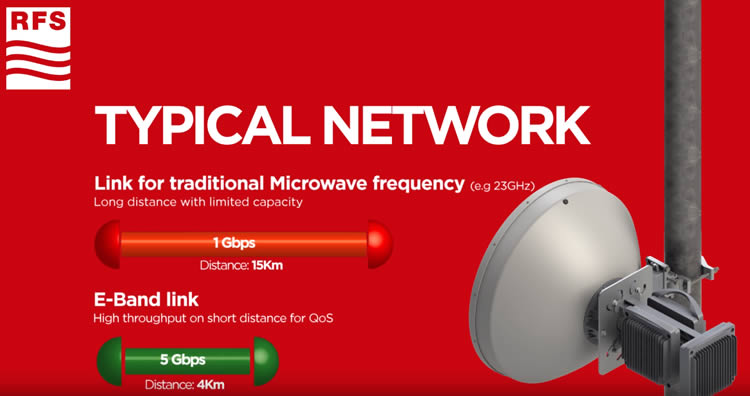Michelle Donegan is a tech writer who has covered the communications industry for more than 25 years on both sides of the pond. Having worked for various industry titles, including Communications Week International, Total Telecom and Light Reading, she specializes in mobile network technology trends.

Radio Frequency Systems has introduced a line of dual-band microwave antennas that aims to overcome some of the challenges that mobile operators face when it comes to backhaul strategies for 5G network deployments.
The dual-band antennas combine the high throughput of E-band frequencies with the broader coverage of microwave frequency bands to create a wireless backhaul offering for 5G networks. According to RFS, the products will allow operators to support larger volumes of 5G traffic over longer distances compared to single-band microwave solutions as well as with lower latency compared to fibre-based backhaul.
- Useful read: What is 5G?
A typical microwave link at 23GHz, for example, can deliver 1 Gbps over 15 kilometres. Whereas, E-band frequencies (for example, 80 GHz) can support 5 Gbps over 4 kilometres. With support for both bands, RFS antennas can support up to 6 Gbps over 7 kilometres – that is, higher capacity with quality of service over longer distances.
The RFS dual-band antennas support 80 GHz E-band transmissions as well as 15 GHz, 18 GHz or 23 GHz medium-frequency band transmissions. The company says the antennas are currently operational in an Eastern European deployment, which has shown how microwave can be an alternative to fibre for 5G backhaul in urban areas.
But, as explained in the video below, the performance of the microwave antennas varies depending on atmospheric conditions. Higher frequency bands, like the E-band, are more affected by weather changes than lower frequency bands. When it is clear, the RFS antennas can achieve 6 Gbps. But when there are clouds or rain storms, the throughput will be closer to 3.5 Gbps and 1 Gbps, respectively.
- Useful read: 5G vs fibre broadband
Consolidation
By consolidating support for two bands in one compact antenna, rather than deploying two separate antennas and leveraging carrier aggregation, mobile operators can reduce some operational costs. One antenna will take up less tower space than two, which should result in lower leasing fees as well as less time and cost spent on installing equipment. RFS says it also enables simpler deployment because the antenna alignment is done via the microwave link, which means the E-band link only needs fine-tuning.
Benoit Bled, product line manager for microwave antennas at RFS, said: “As mobile operators plan their evolution to 5G, many are asking whether microwave transport technology is advanced enough to handle the demands of a 5G radio access network. Our answer is an enthusiastic yes. By supplementing traditional E band transmissions with 15, 18 or 23 GHz transmissions, we’ve unleashed the full power of E band and made 5G microwave backhaul a reality. Our dual-band microwave antennas have already been used in a European deployment that proves it.”
- Useful read: How fast is 5G?
50% off Lyca Mobile’s Pay As You Go plans
Lyca Mobile’s cheap Pay As You Go deals include roaming and international minutes.









